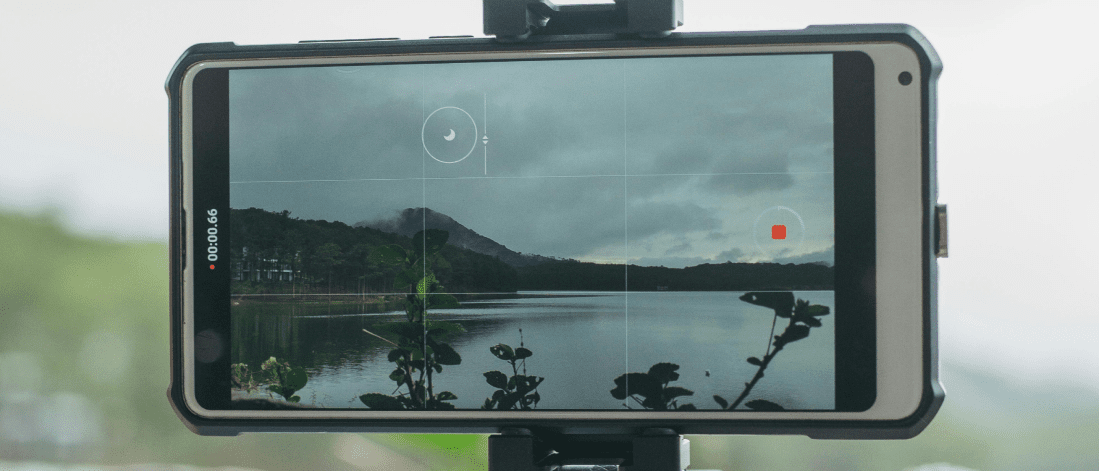
INTRODUCTION —
What Is UGC & Why It Works in 2025
User generated content has become one of the most powerful tools in modern marketing. And honestly, it’s not because it’s “strategic”, but because it’s real.
We’re constantly flooded with ads, campaigns, and branded messages that feel more polished than personal. Most people have built this mental filter that helps them scroll right past anything that looks overly produced or feels like it’s trying too hard to sell. But when they see real people sharing real moments with a product or a brand? That’s when they pause.
Whether it’s a spontaneous Instagram Story, an unfiltered TikTok, or even a slightly shaky YouTube unboxing video, those raw, unscripted moments carry something that traditional marketing can’t replicate: trust.
At its core, user generated content (UGC) is exactly what it sounds like, content created by your audience, not your marketing team. It includes photos, videos, testimonials, reviews, and even social media comments.
What makes UGC so powerful is that it doesn’t feel like marketing. It feels like a friend giving you a recommendation, a stranger showing you something they genuinely love, or a community sharing moments that matter to them.
In 2025, this goes beyond trend. UGC is shaping how brands build trust, foster connection, and drive engagement in a way that feels human and lasting.

Case Studies —
The Importance of Trust in Modern Marketing
Let’s talk about trust.
We’ve all been there: scrolling through endless product options, reading reviews, checking hashtags, watching TikToks from people who already bought that thing we’re considering. Because deep down, before buying anything, we want reassurance. We want to know it worked for someone else. That it’s worth the money, that it won’t disappoint.
Traditional ads might show polished product shots and catchy taglines, but real trust comes from seeing how a product fits into someone’s actual life. When you show real people having real experiences with your product, you’re not just marketing. You’re letting your audience see your brand through someone else’s eyes.
How User Generated Content Boosts Brand Trust
Authenticity and Relatability
We’re wired to trust what feels familiar and relatable.
When your potential customers see someone like them using your product, talking about their experience, or sharing their honest reaction, it creates a kind of emotional shortcut to trust.
Unlike influencer campaigns that sometimes feel transactional or scripted, UGC feels unscripted, imperfect, and genuine. And that’s the point. Maybe it’s a mom sharing how a product fits into her chaotic morning routine, or a student showing how a new tool makes their study sessions easier, or a creative showing how your service helped them land a client. These are the moments people connect with, not because they’re perfectly lit or hashtag-optimized, but because they feel real.
A great example is GoPro.
Their entire brand identity has been built on UGC. By showcasing user-filmed content, they turned their customers into their most effective marketing team. This kind of authenticity creates a ripple effect: it invites more people to share, builds community, and reinforces the feeling that your brand belongs in real life, not just in curated campaigns.

Leveraging Customer Testimonials
Testimonials are one of the most familiar, and still one of the most effective, forms of UGC.
When someone shares how your product or service made a difference for them, they’re doing more than offering feedback. They’re helping future customers picture themselves having that same positive experience.
You can feature these stories on your website, in your emails, on social media, or even in paid ads. The key is to keep the tone human. Let people speak in their own words. Highlight real language, real emotion.
Video testimonials especially carry weight in 2025. They feel personal, unscripted, and relatable. When a customer takes the time to sit in front of a camera and talk about their experience, it shows genuine care—and audiences can feel that.
Even text-based testimonials, when presented authentically (without over-editing), still offer social proof that helps move people closer to a buying decision.
Creating a Community Around Your Brand
UGC is about building belonging.
When people take the time to post about your brand, they’re signaling that they feel connected to it in some way. That emotional investment is priceless. You can nurture this by creating branded hashtags, running community challenges, featuring customer stories on your platforms, or simply engaging back when people tag you.
Platforms like Instagram, TikTok, and even LinkedIn for B2B brands are fertile ground for this kind of organic community-building. The brands that thrive with UGC in 2025 are the ones that see their audience not just as consumers, but as collaborators in telling the brand story. Your community doesn’t want to feel like part of a campaign, they want to feel like part of something real.

The Secret to Viral Brand Growth in 2025
UGC vs. Traditional Advertising
The way people engage with brands has changed dramatically over the past few years.
Where traditional advertising used to be the primary driver of brand awareness, today it’s just one piece of the puzzle, and honestly, it’s often the piece people skip. People crave authenticity. They’re more likely to trust a TikTok showing a real user testing a product than a hyper-produced commercial.
UGC cuts through that noise.
It creates emotional engagement, invites people to participate, react, and share. In 2025, brands that prioritize UGC are seeing higher engagement rates, stronger community ties, and more sustainable growth. Because when your audience becomes part of your storytelling, your reach expands organically.
It’s not just about visibility anymore, but it’s about resonance.
The Role of Social Proof in Consumer Decisions
Before making a decision, most of us instinctively look for validation. Has someone like me tried this? Did it work for them? Is this worth my money?
Social proof plays a huge role here.
When your brand consistently showcases user generated content (whether it’s reviews, before-and-after photos, or simple customer shoutouts) you’re reinforcing that validation. It lowers perceived risk and makes the decision-making process easier.
This is especially true in industries like fashion, beauty, tech, and even education, where seeing how a product fits into someone’s real life is often more persuasive than any brand-created message.

Getting Started —
Top UGC Marketing Strategies for 2025

Incorporating UGC on Social Media Platforms
Social media is where UGC naturally thrives.
If you’re not actively sharing, reposting, or highlighting customer content, you’re missing out on one of the easiest ways to build connections.
Encourage your audience to tag your brand. Create dedicated Story Highlights. Launch branded hashtags. Feature customer posts in your Reels, TikToks, or even on LinkedIn, depending on your audience.
The goal isn’t to curate a perfect feed, it’s to reflect real moments, and every time you share UGC, you’re reinforcing the message:
“We see you. You’re part of this.”
Creating UGC Campaigns that Engage Customers
If you want more user generated content, invite your community to participate. That doesn’t mean running expensive giveaways or complicated challenges. Sometimes, a simple prompt is enough:
- “Show us how you use this product in your daily routine.”
- “Tag us in your favorite unboxing moment.”
- “Share your story with #MyBrandExperience.”
You can also feature a “Customer of the Month,” highlight milestone stories, or celebrate customer wins, when people know there’s a chance their content will be featured, they’re much more likely to engage.
And the best part is: the more stories you share, the more others want to join in.
Utilizing UGC in Email Marketing
Let’s not underestimate email.
While social media gets all the buzz, email remains one of the most effective channels for nurturing your audience, and adding UGC makes it feel even more personal.
Include customer reviews in your newsletters. Share screenshots of real customer feedback. Feature user photos in your product launches. Even adding a short customer quote at the top of your email can increase engagement rates. UGC is about relevance, it reminds your subscribers that real people love what you’re offering.
Showcasing UGC on Your Website
Your website is often where the final decision happens. So why not let UGC help seal the deal?
Create a gallery page featuring customer photos, add a testimonial slider on product pages, highlight customer case studies in your blog. You can also incorporate user reviews into your homepage design or use UGC in your checkout flow to reduce cart abandonment.
Small touches like these create a sense of community and trust right when people are considering making a purchase.
How UGC Outperforms Influencer Marketing
Cost-Effectiveness of UGC
Influencer partnerships can be valuable, but they often come with big price tags and contracts. UGC, on the other hand, comes from people already using and loving your brand, without you having to pay them to do so.
This doesn’t mean you shouldn’t invest in encouraging or curating UGC, but from a pure ROI perspective, it’s often far more cost-effective. Plus, it feels more authentic. Audiences know the difference between a sponsored post and a genuine recommendation.
And when it comes to building long-term trust, that difference matters.
Building Long-Term Relationships with Customers
UGC is more than a content strategy. It’s a relationship-building tool.
Every time you share a customer story, repost a user’s photo, or feature a testimonial, you’re deepening that connection.You’re showing people that their voice matters and that kind of recognition sticks.
Over time, it turns casual buyers into loyal customers and loyal customers into vocal advocates. The brands that win in 2025 aren’t the ones with the biggest ad budgets, they’re the ones building real relationships, one customer story at a time.

Conclusion —
Recap of UGC Benefits
At the heart of it, user generated content works because it’s rooted in truth.
- It builds trust without forcing it.
- It creates connection without feeling transactional.
- It drives engagement because people relate to it.
From increasing brand awareness to improving conversion rates, UGC touches every stage of the customer journey, and in a world where authenticity is the new currency, that makes it one of the most valuable marketing tools you have.

Call to Action for Implementing UGC in Your Strategy
If you’re serious about growing your brand in 2025, UGC can’t be an afterthought.
Start by encouraging your audience to share, respond when they do, celebrate their stories, look for moments that feel raw, real, and reflective of what your brand actually stands for.
Because at the end of the day, the best marketing doesn’t come from behind a camera or in a boardroom. It comes from your community. From your people. From the stories already being told right now.
FAQs
User generated content refers to any content—photos, videos, testimonials, reviews—created by individuals rather than brands. It captures authentic customer experiences.
UGC builds trust by showcasing real people sharing real experiences. This social proof makes your brand feel more authentic, relatable, and credible to potential customers.
You can integrate UGC across social media, email marketing, your website, and even paid ads. The key is to feature content that feels genuine and customer-led.
In many cases, yes. UGC tends to feel more authentic, is more cost-effective, and helps build deeper, long-term relationships with customers based on trust and shared experiences.
Make it easy and rewarding. Run simple campaigns, create branded hashtags, feature customer stories, and always acknowledge and celebrate your audience when they share.
We have what you need —
Ready to scale your brand without losing your story?
Let’s build something meaningful—authentic, strategic, and aligned with who you truly are.





